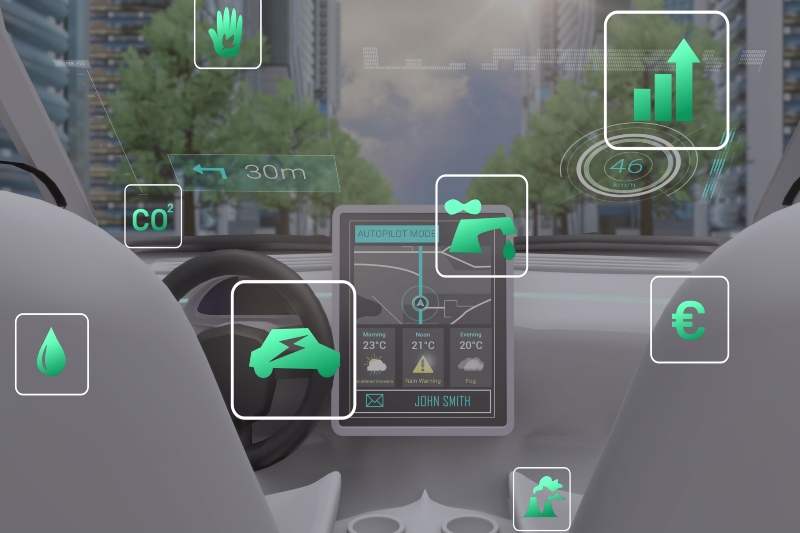Owen Mabbott, Head of Solutions at Omility, sets out the main steps required for developing a robust decarbonisation strategy.


With the UK's shift toward electric vehicles (EVs) accelerating, public sector fleet and transport managers face growing pressure to decarbonise their operations. A comprehensive, data-driven approach ensures a smooth transition, helping fleets meet legal requirements while achieving sustainability goals. By leveraging telematics data, performing energy calculations, and developing robust infrastructure plans, fleet managers can gain the confidence needed to navigate this critical transformation.
Analysing current fleet operations
A successful decarbonisation plan begins with a thorough analysis of current fleet activities. This includes gathering detailed data on vehicle usage, such as routes, distances, schedules, parking locations, and payloads. Telematics systems play a vital role, offering real-time insights into vehicle behaviour and patterns. This baseline analysis enables a clear understanding of operational needs, current inefficiencies, and drives the creation of vehicle profiles, ensuring a clear foundation for electrification decisions.
Calculating energy requirements
For public sector fleets, accurately assessing energy demands is crucial to operational reliability. Basic mileage-based comparisons often fail to account for variables like weather, topography, road conditions, and payload, all of which significantly impact EV performance. A more effective method is physics-based energy modelling, which calculates the energy needed for each route. This approach provides a granular view of range requirements, identifies charging opportunities, and ensures that fleet managers address potential challenges proactively.
Selecting appropriate battery sizes
Battery sizing is central to ensuring that EVs meet operational needs without incurring unnecessary costs. By matching energy requirements to operational schedules, battery assessments consider factors like degradation, state-of-charge limits, and reserve energy for unforeseen demands. Future technological advancements should also be considered, selecting battery capacities that offer long-term value and scalability. This strategic approach minimises disruptions while optimising costs over the vehicle's lifecycle.
Planning Charging Infrastructure
Developing a charging strategy is essential for fleet electrification. Public sector fleets often operate across diverse locations, requiring tailored solutions for depots, offices, and driver residences. Evaluations should include the power ratings of available chargers, balance energy demands with tariff costs and identify optimal charging locations based on operational schedules. Ratio planning ensures cost-effectiveness by avoiding overinvestment in infrastructure. For phased transitions or mixed fleets, managed charging systems offer added flexibility, reducing grid strain and optimising energy use.
Understanding energy consumption patterns
Analysing prospective fleet-wide energy consumption helps identify peak demands and plan for infrastructure capacity. Public sector fleets may benefit from managed charging systems, which dynamically allocate energy to vehicles based on priority, schedule, and cost. These systems maximise efficiency by leveraging off-peak tariffs and reducing the number of chargers required. Renewable energy integration, such as solar or wind power, further supports sustainability goals, aligning with public sector commitments to net-zero emissions.
Financial and emission impact analysis
A comprehensive decarbonisation plan must evaluate both financial feasibility and environmental benefits. Cost analysis should include vehicle procurement, charging infrastructure, and operational expenses like energy tariffs and maintenance. Public sector fleets can often access grants, incentives, and government funding to offset upfront costs. Total cost of ownership (TCO) comparisons between current vehicles and EVs highlight potential savings over time. Additionally, calculating emission reductions provides a tangible measure of progress toward sustainability targets, supporting compliance with regulatory frameworks.
Delivering dynamic plans
Traditional decarbonisation plans often rely on static reports, limiting flexibility as fleet needs or market conditions evolve. Public sector fleet managers can benefit from dynamic, software-driven solutions that allow real-time updates to vehicle specifications, operational schedules, and infrastructure requirements. This adaptability minimises consultancy costs and ensures the plan remains relevant, even as new EV models or charging technologies become available.
Conclusion
For public sector fleet managers, transitioning to electric vehicles is both a legal imperative and an opportunity to lead in sustainability. A robust decarbonisation strategy, rooted in data and supported by dynamic planning tools, provides the foundation for success. By analysing current operations, calculating precise energy needs, and carefully planning infrastructure, public sector fleets can achieve cost-effective electrification while reducing emissions. This proactive approach empowers fleet managers to meet the challenges of decarbonisation with confidence, paving the way for a greener future.
Sign up here to receive our free weekly news bulletin and quarterly e-book.